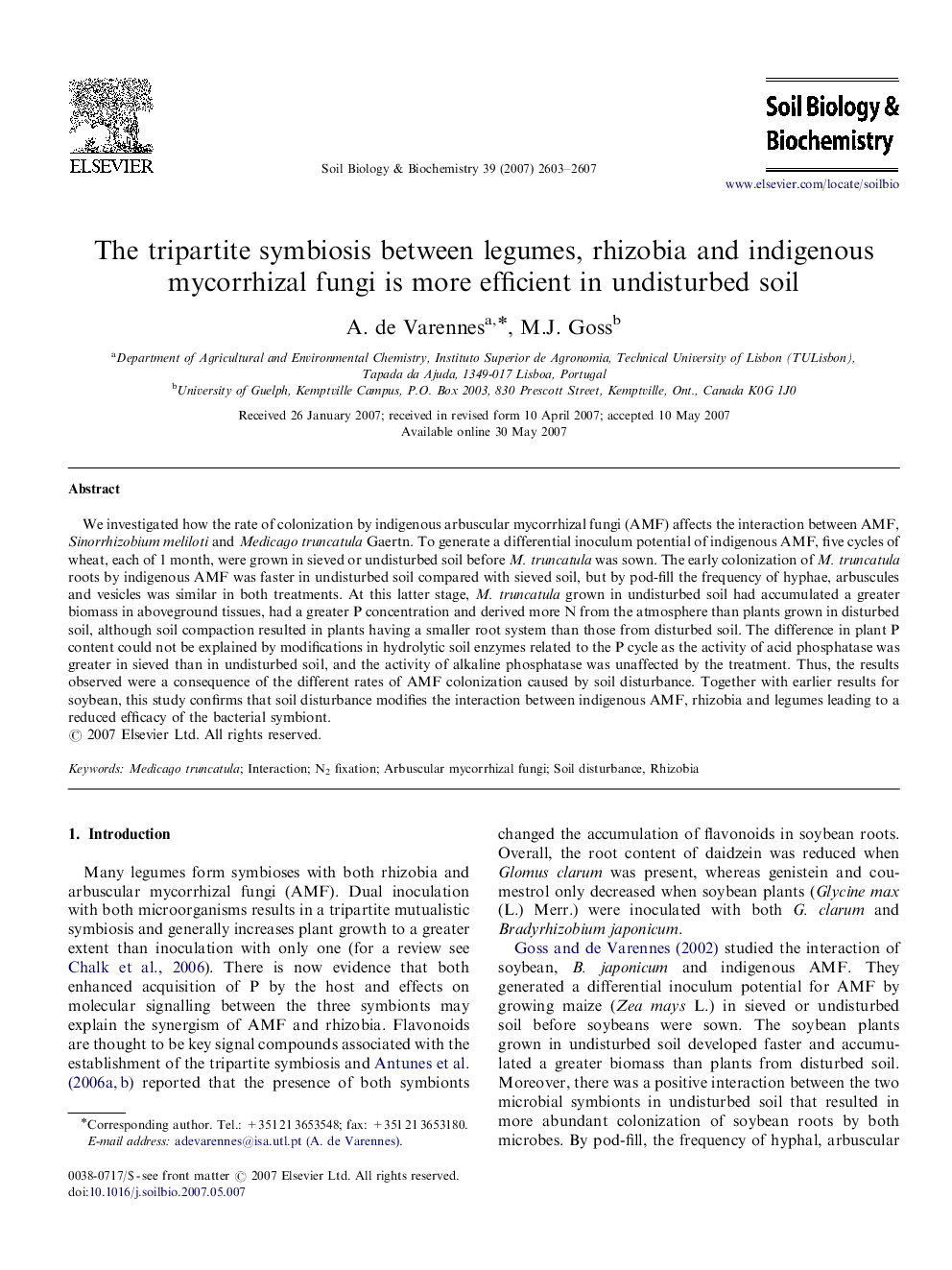| Article ID | Journal | Published Year | Pages | File Type |
|---|---|---|---|---|
| 2025924 | Soil Biology and Biochemistry | 2007 | 5 Pages |
We investigated how the rate of colonization by indigenous arbuscular mycorrhizal fungi (AMF) affects the interaction between AMF, Sinorrhizobium meliloti and Medicago truncatula Gaertn. To generate a differential inoculum potential of indigenous AMF, five cycles of wheat, each of 1 month, were grown in sieved or undisturbed soil before M. truncatula was sown. The early colonization of M. truncatula roots by indigenous AMF was faster in undisturbed soil compared with sieved soil, but by pod-fill the frequency of hyphae, arbuscules and vesicles was similar in both treatments. At this latter stage, M. truncatula grown in undisturbed soil had accumulated a greater biomass in aboveground tissues, had a greater P concentration and derived more N from the atmosphere than plants grown in disturbed soil, although soil compaction resulted in plants having a smaller root system than those from disturbed soil. The difference in plant P content could not be explained by modifications in hydrolytic soil enzymes related to the P cycle as the activity of acid phosphatase was greater in sieved than in undisturbed soil, and the activity of alkaline phosphatase was unaffected by the treatment. Thus, the results observed were a consequence of the different rates of AMF colonization caused by soil disturbance. Together with earlier results for soybean, this study confirms that soil disturbance modifies the interaction between indigenous AMF, rhizobia and legumes leading to a reduced efficacy of the bacterial symbiont.
